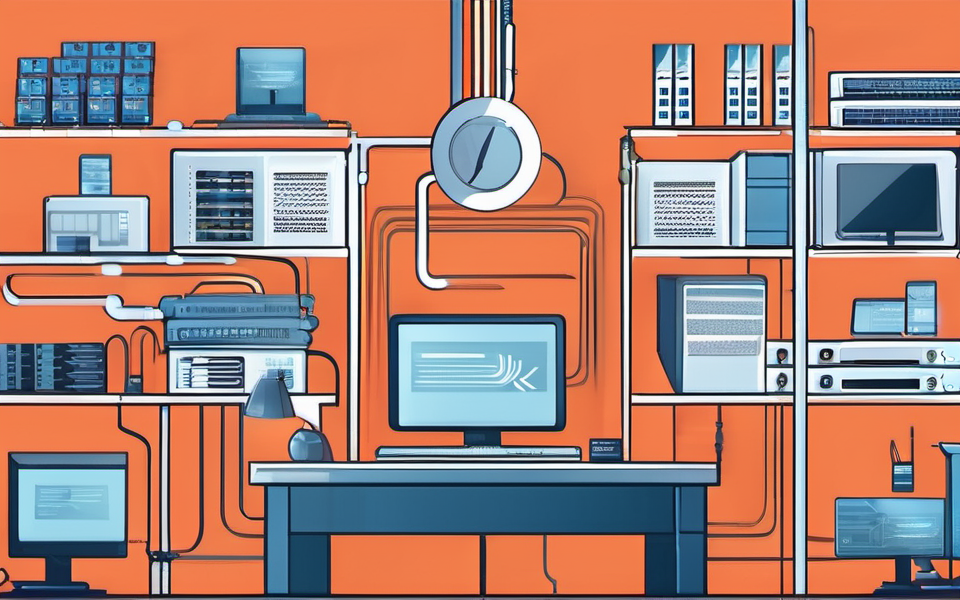You Think Your Network Is Safe? Think Again! 🤯
In today’s digital landscape, cyber threats are more sophisticated than ever before. Malicious actors are constantly finding new ways to infiltrate networks, steal data, and disrupt operations. But don’t worry, you don’t have to become a tech wizard to keep your network safe. By understanding and implementing cutting-edge security solutions, you can proactively defend your systems from cyberattacks.
Level Up Your Network Security with These Game-Changing Solutions
Think of your network security like a castle with multiple layers of defense. Each layer strengthens the overall fortress. Here are some key solutions to fortify your network:
1. Embrace the Power of Next-Generation Firewalls
Imagine a shield that actively blocks intrusion attempts and identifies suspicious activity. That’s exactly what a Next-Generation Firewall (NGFW) does. Unlike traditional firewalls, NGFWs are smarter, more flexible, and can detect and block even the most elusive threats. They analyze network traffic in real time, filtering out harmful content and applications while letting legitimate traffic flow freely.
Benefits of Using an NGFW:
- Advanced threat detection: NGFWs use machine learning and other sophisticated techniques to identify new and emerging threats that traditional firewalls might miss.
- Application control: Control which applications can access your network and restrict access to risky applications that could compromise security.
- Improved visibility: Gain insights into network activity and identify potential threats with detailed reports and analytics.
- Simplified management: Centralized management consoles make it easier to configure and manage your firewall rules, keeping your network secure with minimal effort.
2. Zero Trust Architecture: A New Era of Security
Think of it this way: Traditional network security often assumes everyone inside the network is trustworthy. Zero Trust Architecture, on the other hand, assumes no one can be trusted, and verifies every user and device before granting access.
Key Features of Zero Trust:
- Strong Authentication: Implement multi-factor authentication (MFA) to require users to provide multiple forms of identification before gaining access.
- Least Privilege Principle: Give users access only to the resources they need to do their job, minimizing the potential damage if their accounts are compromised.
- Micro-Segmentation: Segment your network into smaller, isolated sections, limiting the spread of infections and attacks.
- Continuous Monitoring and Enforcement: Continuously monitor your network and user activity, and enforce security policies automatically.
3. Endpoint Security: Protecting Your Devices
Think of endpoint security as a shield for your individual devices. Laptops, desktops, smartphones, and tablets all have access to your network, so securing these endpoints is crucial to safeguarding your overall network.
What is Endpoint Security and How Does it Work?
Endpoint security software uses a combination of techniques to protect your devices from threats, including:
- Antivirus and Anti-Malware Protection: Protects against known and unknown threats, including viruses, malware, ransomware, and spyware.
- Firewall: Controls network access to the device, blocking unauthorized connections and preventing malicious traffic.
- Data Loss Prevention (DLP): Helps prevent sensitive data from leaving the device unauthorized.
- Device Encryption: Protects your data from theft, even if the device itself is stolen.
4. Intrusion Detection and Prevention Systems (IDS/IPS): Early Warning and Defense
Imagine your network as a city with a highly trained security team constantly monitoring for threats. That’s what IDS/IPS systems do. They monitor your network traffic for suspicious activity and take actions to prevent intrusions, such as blocking connections, sending alerts, or quarantining infected devices.
**IDS/IPS systems are critical to: **
- Proactively Identify Threats: They constantly analyze network traffic, identifying suspicious patterns and known attack signatures.
- Real-Time Protection: Respond to threats in real time, minimizing the impact of an attack.
- Incident Response: Provide crucial evidence and detailed information to help with security investigations.
5. Security Information and Event Management (SIEM): Gaining the Big Picture
Think of SIEM as a dashboard that gives you a comprehensive view of your network’s security status. It gathers data from various security tools, logs, and systems, allowing you to analyze security events, identify potential threats, and respond to incidents quickly.
Why SIEM is Vital:
- Centralized Monitoring: Gain a unified view of all security activity across your entire network, making it easier to detect threats and potential vulnerabilities.
- Advanced Analytics: Analyze log data and identify anomalies, potentially revealing hidden threats that might be missed by individual security tools.
- Incident Response and Investigation: Streamline security incident response by providing a complete picture of the attack, allowing faster resolution and remediation.
Final Thoughts
Building a strong network security posture is crucial to protecting your data and keeping your business running smoothly. By implementing the latest technical solutions and keeping an eye on evolving cyber threats, you can significantly reduce your risk of attack. Remember: security is not a destination, it’s a continuous journey!




